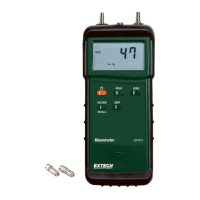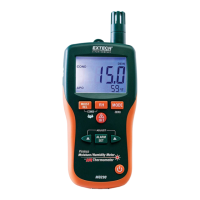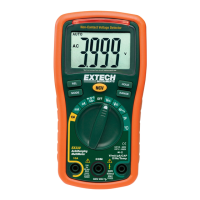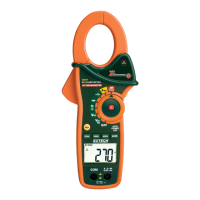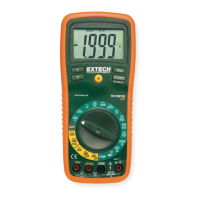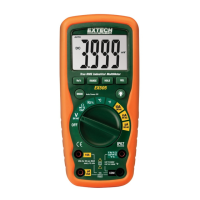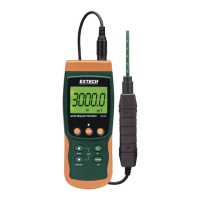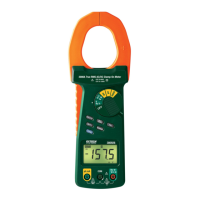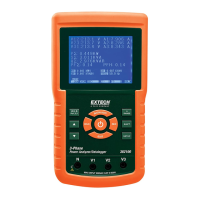V01.02.01 7/04 3
OVERVOLTAGE CATEGORY III
This meter meets the IEC 610-1-95 standard for
OVERVOLTAGE CATEGORY III. Cat III meters are protected
against overvoltage transients in fixed installation at the
distribution level. Examples include switches in the fixed
installation and some equipment for industrial use with
permanent connection to the fixed installation.
SAFETY INSTRUCTIONS
This meter has been designed for safe use, but must be
operated with caution. The rules listed below must be carefully
followed for safe operation.
1. NEVER apply voltage or current to the meter that exceeds the
specified maximum:
Input Protection Limits
Function Maximum Input
V DC or V AC 1000V DC/750V AC, 200Vrms on
400mV range
mA AC/DC 500mA 250V fast acting fuse
A AC/DC 20A 250V fast acting fuse(30
seconds max every 15 minutes)
Frequency, Resistance,
Capacitance, Duty Cycle,
Diode Test, Continuity
250Vrms for 15sec max
Temperature 60V DC/24V AC
2. USE EXTREME CAUTION when working with high voltages.
3. DO NOT measure voltage if the voltage on the "COM" input
jack exceeds 600V above earth ground.
4. NEVER connect the meter leads across a voltage source
while the function switch is in the current, resistance, or diode
mode. Doing so can damage the meter.
5. ALWAYS discharge filter capacitors in power supplies and
disconnect the power when making resistance or diode tests.
6. ALWAYS turn off the power and disconnect the test leads
before opening the covers to replace the fuse or battery.
7. NEVER operate the meter unless the back cover and the
battery and fuse covers are in place and fastened securely.
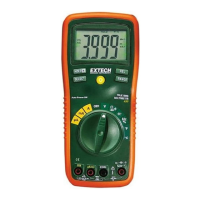
